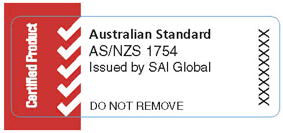Pursuant to section 5.9(2) of the Aeronautics Act, and after taking into account that the exemption is in the public interest and is not likely to adversely affect aviation safety, I hereby exempt all passengers using a Child Restraint System foreign-approved to design standards not included in paragraph 551.501(b)(1) of the Airworthiness Manual (AWM), all passengers responsible for an infant and all passengers responsible for a person using a Child Restraint System foreign-approved to design standards not included in paragraph 551.501(b)(1) of the AWM from the requirements of subsection 605.26(1)(a), (b) and (c), as appropriate, of the Canadian Aviation Regulations (CARs),subject to the conditions set out in this exemption only with respect to a child restraint system.
Subsection 605.26(1) is reproduced in Appendix A.
PURPOSE
The purpose of this exemption is to permit all passengers using a Child Restraint System foreign-approved to design standards not included in paragraph 551.501(b)(1) of the AWM, all passengers responsible for an infant and all passengers responsible for a person using a Child Restraint System foreign-approved to design standards not included in paragraph 551.501(b)(1) of the AWM to satisfy their requirements under subsection CAR 605.26(1).
APPLICATION
This exemption applies to all passengers using a Child Restraint System foreign-approved to design standards not included in paragraph 551.501(b)(1) of the AWM, all passengers responsible for an infant and all passengers responsible for a person using a Child Restraint System foreign-approved to design standards not included in paragraph 551.501(b)(1) of the AWM.
This exemption is intended to reduce the risk to which infants and young children are exposed when travelling by air, whether it is on flights in Canada’s remote north, from city to city domestically, or on Canadian international carriers. In particular, this exemption increases the range of Child Restraint Systems (CRS) that parents can use on Canadian aircraft. The intent is to allow not only the currently approved Canadian and American CRS, but also those approved by other foreign authorities as accepted for use on aircraft.
CONDITIONS
This exemption is subject to the following conditions:
1. A Child Restraint System foreign-approved to design standards not included in paragraph 551.501(b)(1) of the AWM (hereinafter referred to as a “device”) may be used in lieu of the Child Restraint Systems defined in subsection 101.01(1) “Child Restraint System”, so long as the device is labelled (see Appendix B) as meeting one or more of the following standards:
- a) approved for use in motor vehicles according to the UN standard ECE R 44-03, or later series of amendments, together with a qualification for use in aircraft according to the German ‘Qualification Procedure for Child Restraint Systems for Use in Aircraft’ (TÜV Doc.: TÜV/958-01/2001);
- b) approved under Australia/New Zealand Standard AU/NZS 1754:2013, or later amendments; or
- c) approved for use in motor vehicles, manufactured and tested to standards equivalent to those listed above. The device should be labelled with an associated qualification sign, which shows the name of the qualification organisation and a specific identification number, related to the associated qualification project. The qualifying organisation should be a competent and independent organisation that is acceptable to Transport Canada.
Note: Requests for determination of acceptable equivalent standards should be forwarded to Chief, Aircraft Certification Standards (AARTC), Standards Branch, Transport Canada Civil Aviation, Ottawa, Ontario K1A 0N5.
2. The device must be able to be installed properly on the respective aircraft seat.
3. All requirements set out in the CARs pertaining to Child Restraint Systems, including but not limited to section 605.28, paragraph 604.82(1)(a), paragraph 604.85(5)(e), paragraph 703.38(1)(b), paragraph 704.33(1)(b), paragraph 705.40(1)(b), section 551.501 of the AWM and subclause 723.39(2)(b)(vii)(A)(III) of the Commercial Air Service Standards (CASS), shall remain applicable in respect of a person using a device specified in condition 1 above, or a person responsible for an infant or a person using such a device, as though the device met the definition of Child Restraint System set out in subsection 101.01(1).
4. Every passenger who is not an infant, where the pilot-in-command or the in-charge flight attendant directs that safety belts be fastened, shall
- a) ensure that the passenger’s safety belt or device specified in condition 1 is properly adjusted and securely fastened; and
- b) if responsible for a person who is using a device specified in condition 1, ensure that the person is properly secured.
VALIDITY
This exemption is in effect until the earliest of the following:
- a) November 6, 2020 at 23:59 (EST);
- b) the date on which any condition set out in this exemption is breached; or
- c) the date on which this exemption is cancelled in writing by the Minister where he is of the opinion that the exemption is no longer in the public interest or is likely to adversely affect aviation safety.
DATED at Ottawa, Ontario, this 30th day of November, 2015 on behalf of the Minister of Transport.
Original Signed by
Aaron McCrorie,
Director General, Aviation Safety Regulatory Framework
APPENDIX A
CANADIAN AVIATION REGULATIONS
Part VI – General Operating and Flight Rules
Subpart 05 - Division II – Aircraft Equipment Requirements
Section 605.26 – Use of Passenger Seat Belts and Restraint Systems
Use of Passenger Safety Belts and Restraint Systems
(1) Where the pilot-in-command or the in-charge flight attendant directs that safety belts be fastened, every passenger who is not an infant shall
- (a) ensure that the passenger’s safety belt or restraint system is properly adjusted and securely fastened;
- (b) if responsible for an infant for which no child restraint system is provided, hold the infant securely in the passenger’s arms; and
- (c) if responsible for a person who is using a child restraint system, ensure that the person is properly secured.
APPENDIX B
EXAMPLES OF QUALIFICATION MARKS (LABELS) FOR CHILD RESTRAINT SYSTEMS (DEVICES) ACCEPTABLE AS MEETING THE CONDITIONS OF THIS EXEMPTION
- Date de modification :


